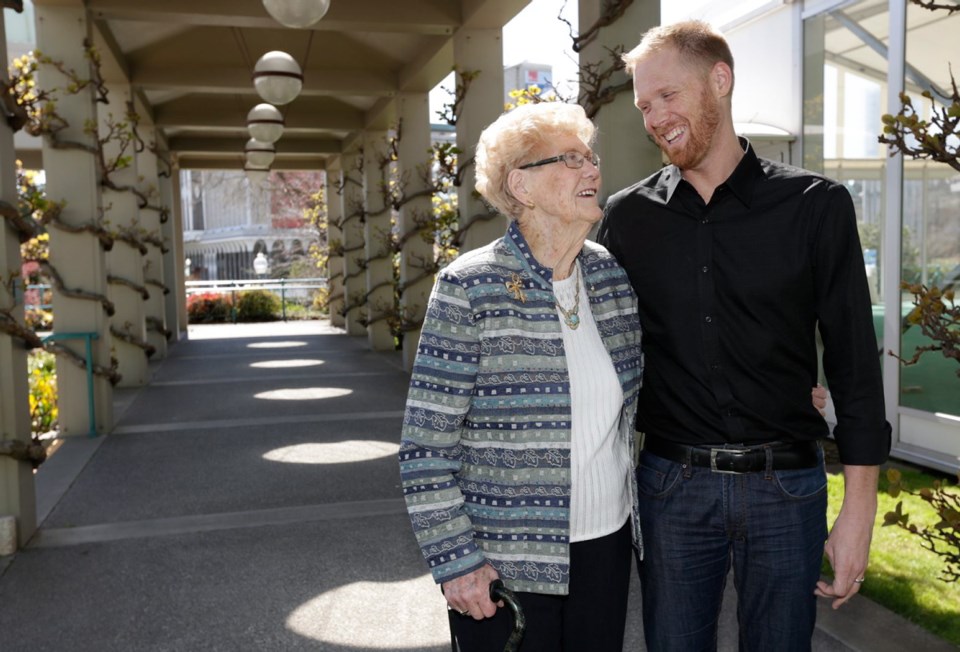Muriel Overgaard stuck out as one of the only women at her first union convention in the early 1970s.
“There were only two of us,” she said. “We were certainly the oddballs.”
Today, about 60 per cent of CUPE B.C.’s 83,000 members are women. And as the union celebrated its 50th anniversary last week in Victoria, the organization also recognized labour leaders like Overgaard, now 92.
“I got involved because I found that the equality between the women of my workplace and the men was so different,” said Overgaard, who was the first female president of CUPE B.C.
“I just felt that we had to do something, we had to get in there and make some changes.”
Overgaard was a secretary with the Greater Victoria School District when she joined her union 42 years ago. She saw men getting higher wages and more access to benefits and wanted to fight for the rights of part-time workers — most of whom were women taking time off to care for families.
Overgaard became president in 1976 and served seven years in the role.
She founded the first union for inside workers at Victoria schools, a group that included support staff like secretaries and librarians. She also formed CUPE B.C.’s first women’s committee, which hosted meetings and courses for female members on topics such as labour laws and negotiating salaries.
“They were all there for the same reasons: They wanted to get more involved in their unions,” Overgaard said.
“But you know, they had to have some strengths to do that, and we gave them those strengths.”
Response from men in the union wasn’t universally positive in the beginning, she said.
“Sometimes we got a rough ride, especially at first,” she said.
“But toward the end of my time at CUPE, they were very supportive. … A lot of the strikes we had in the late ’70s, they were concerning women’s wages, and the men were right there with us.”
Bernice Kirk was also honoured last week as one of two female presidents elected to CUPE B.C. after Overgaard. Before taking the position, Kirk worked as secretary-treasurer under Overgaard.
“She was dead serious that women had to get recognized for what they did,” Kirk said.
Overgaard also paved the way for women outside of CUPE, running for provincial office.
“She ran twice in Oak Bay-Gordon Head at a time when women generally didn’t run and in a riding that was never seen as a possible win for the NDP,” said Elizabeth Cull, who in 1989 became the first woman and first NDP candidate to win in the riding.
And while Overgaard’s union involvement didn’t have a direct influence on her own grandson, she appears to have passed on some labour genes.
Her grandson Richard Overgaard began learning about Overgaard’s background only as an NDP intern in 2002. Since then, he’s worked in communications for both CUPE and the B.C. Teachers’ Federation.
“When I started getting into the movement, she brought out the CUPE history book and talked about what she did and what others did,” he said.
Much has changed, he said, but CUPE continues to fight for equality — though the focus has shifted toward areas like LGBT rights.
He called his grandmother whip smart.
“She’s still driving, she’s still kicking butt at bridge, she says, ‘the young folks can’t keep up,’ meaning the 70-year-olds.”
For her part, Overgaard said she’s proud of the work CUPE continues to do.
“It’s been truly an organization that works for the people and employees.”



